Insights
Understanding College Student Attitudes for Fall 2020
New Survey Provides Insights into How Higher Education Communicators and Administrators can Address Concerns of Fall 2020 Students
The dual threat of COVID-19 and state budget shortfalls are constraining access to students and public investment in higher education. In order to help higher education communicators and administrators better understand student attitudes related to COVID-19, Quinn Thomas and DHM Research conducted a survey of 600 current or prospective Fall 2020 college students in California, Oregon, and Washington.
Concerns about online courses tempered by desire for safety
Over a third of West Coast college students either currently enrolled or considering enrollment this fall are less interested in attending due to COVID-19. When asked why they are less interested in attending college this year, half (50%) brought up concerns about the quality of online classes. Only a quarter (24%) indicated safety as a primary concern.
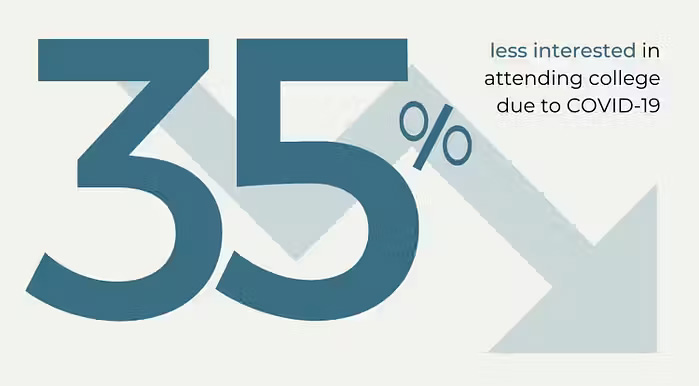
At first glance, this may seem as though negative sentiment about online courses overpowers safety considerations for many students. However, when asked to rate types of learning environments, it becomes clear students favor what is safest. A combination of in-person and online classes based on what is safe at the time is most appealing (69%), followed by completely online (60%). Fewer than half (44%) find a completely in-person environment appealing, making it the least preferred type of environment.
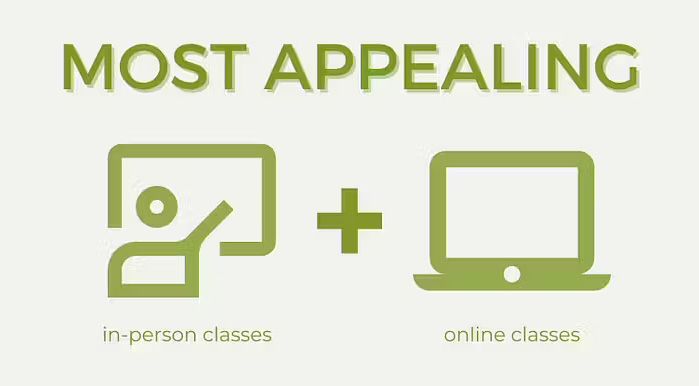
Students lean toward thinking online courses are less rigorous (38%) rather than as rigorous (28%) or more rigorous (23%) than in-person courses. Half believe they learn better in person (55%) or with hands-on experiences that are not available online (50%). Nonetheless, the majority (65%) will continue to enroll at their current or preferred school if only online courses are offered. There is a significant gap between public university students (74%) and community college students (54%) willing to continue in an online only environment.
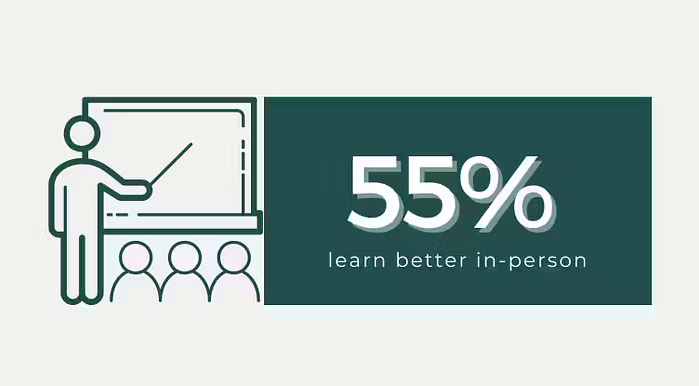
COVID-19 concerns may make students stay close to home
With so much college migration among West Coast states, we were interested in whether students were still willing to move out of their home state to attend college. There are some interesting differences between the states. Four out of ten California students say they’re less willing to move out of state for college—seven points higher than Oregon and 12 points higher than Washington. There are some differences between younger and older students also. Forty percent of 18 to 24-year-old students are less willing to move compared with only 31 percent of those age 25 and older.
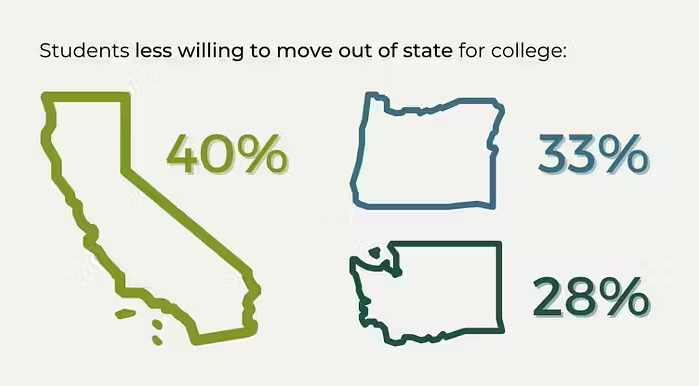
Why are these students less willing to move out of state? The overwhelming sentiment – 55 percent – is that it’s safer for them to be closer to home in the face of COVID-19. Contrary to a popular narrative, only 11 percent said they were less willing to go to an out of state school because online courses weren’t worth the extra money.
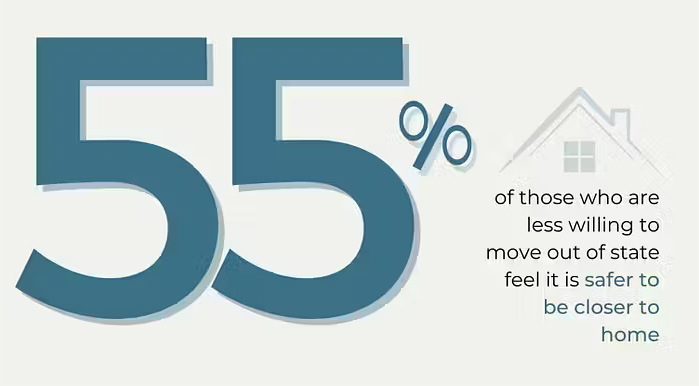
Community and technical colleges earn good grades
For students whose concerns lead them to avoid four-year college during COVID-19, community colleges are attractive options.
Large majorities of students believe that there is value to starting a 4-year degree at community colleges (79%), that faculty at community colleges are just as good as they would get in their first two years at a four-year college (66%), and that community colleges would offer small class sizes for courses in the first two years (66%).
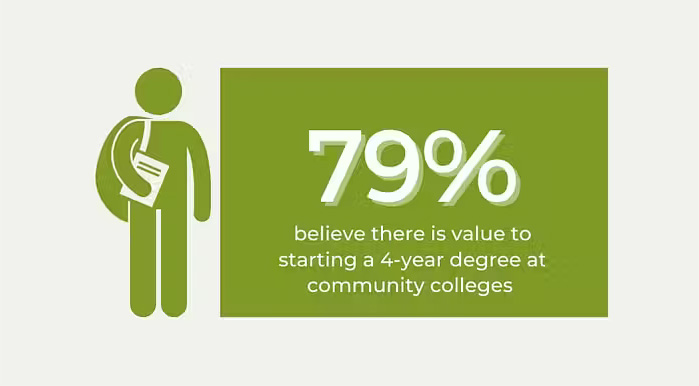
Washington students are more likely to agree that there is value to starting at a community college (87%) and that the faculty are just as good (76%). Although total agreement is similar for students at four-year schools and those in community colleges, those enrolled (or planning to enroll) in community colleges tend to more strongly agree to these messages.
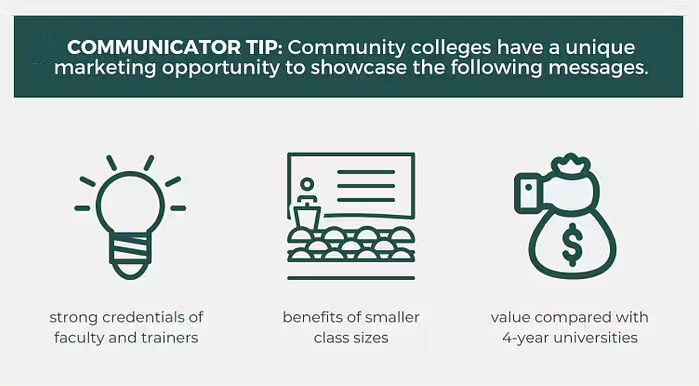
Communicate COVID-19 safety plans and demonstrate preparedness for online learning
Students say COVID-19 plans are a top consideration in their decision to attend college this fall. Importantly, they overwhelmingly support safety measures and say they’re willing to adopt behaviors to keep themselves and the community safe.
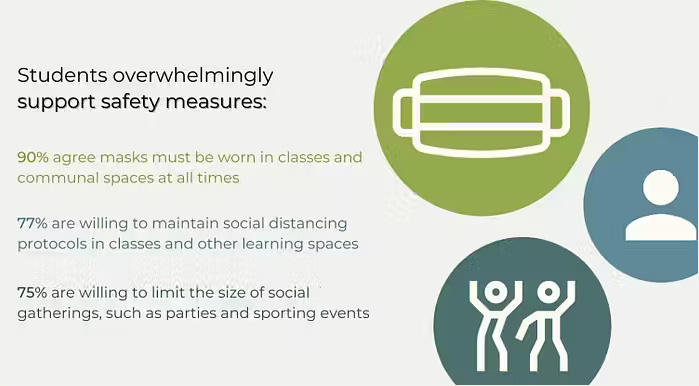
Nearly 90 percent of students agree that masks must be worn at all times in classes and communal spaces. Eighty percent say they’re willing to adopt this behavior on campus. A full three-quarters of our student respondents (77%) report they’re willing to maintain social distancing protocols in classes and other learning spaces, and a similar number (75%) say they’re willing to limit the size of social gatherings, such as parties and sporting events. Even 70 percent of our respondents say they’re willing to maintain social distance in student housing.
The idea of proactive updates to students regarding COVID-19 cases is also very popular, as is the need to track and notify students who are exposed. Over 90 percent of students support regular and transparent updates about COVID-19 cases on campus, and 89 percent support establishing campus-based response teams who can track patients and notify those who’ve been in contact with them.
It’s important to note that support for adopting COVID-19 safety protocols is actually higher at public universities than community colleges, which makes sense when you think about the time spent on campus. Support levels on each of the issues identified in the graphic above are actually 10 points higher on average in public universities when compared with community colleges.
Finally, colleges and universities need to help address student perceptions about online learning by highlighting course and faculty preparedness for online classes.
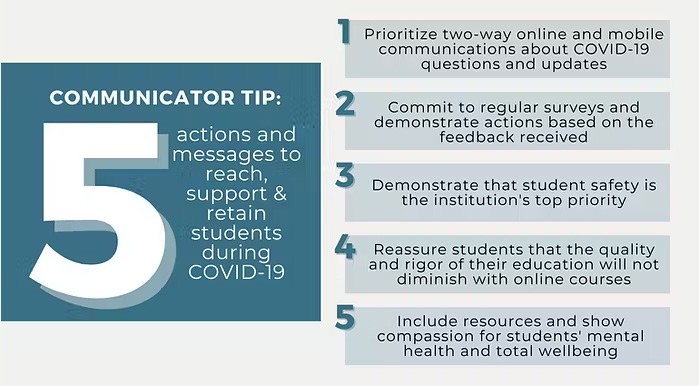
Research Methodology
The online survey consisted of 600 potential college students from California, Oregon and Washington and took approximately 11 minutes to complete. This is a sufficient sample size to assess potential students’ opinions generally and to review findings by multiple subgroups, including age, gender, race/ethnicity, and others.
Respondents were members of a professionally maintained online panel. Respondents were invited to the survey via email. A variety of quality control measures were employed, including questionnaire pre-testing and validation. A combination of quotas and weighting by age, gender, race/ethnicity, and geography were used to match the demographic makeup of the general population in the surveyed area.
Statement of Limitations
Any sampling of opinions or attitudes is subject to a margin of error. The margin of error is a standard statistical calculation that represents differences between the sample and total population at a confidence interval, or probability, calculated to be 95%. This means that there is a 95% probability that the sample taken for this study would fall within the stated margin of error if compared with the results achieved from surveying the entire population. The margin of error for this survey is +/- 4.0%.
About Quinn Thomas
Quinn Thomas is an award-winning marketing communications and brand strategy agency founded in 2009. The agency is committed to thorough, audience-focused research and using it as the foundation for approaching every new communications challenge. The agency has offices in Seattle and Portland and has extensive experience in higher education, healthcare, energy and real estate.
About DHM Research
DHM Research has been providing opinion research and consultation throughout the Pacific Northwest and other regions of the United States for over 40 years. The firm is nonpartisan and independent and specializes in research projects to support public policy making.
